Chapter: Modern Medical Toxicology: Organic Poisons (Toxins): Venomous Bites and Stings
Common Cobra - Organic Poisons (Toxins)
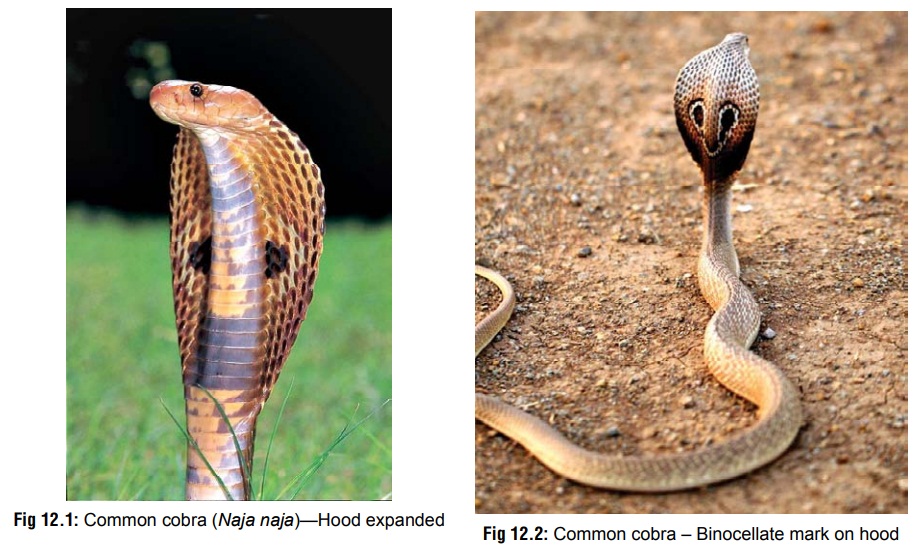
Common Cobra
Scientific Name
Naja naja.
Other Common Names
Indian Cobra.
Geographical Distribution
All over India.
Physical Appearance
·
The common cobra is usually brown or
black in colour.
·
It is a distinctive snake growing up
to 5 to 6 feet in length, with a distensible neck that can be expanded into a
hood (Fig 12.1). On the dorsal side
of the hood, there may be a monocellate (monocle) or binocellate (spectacle)
mark (Fig 12.2).
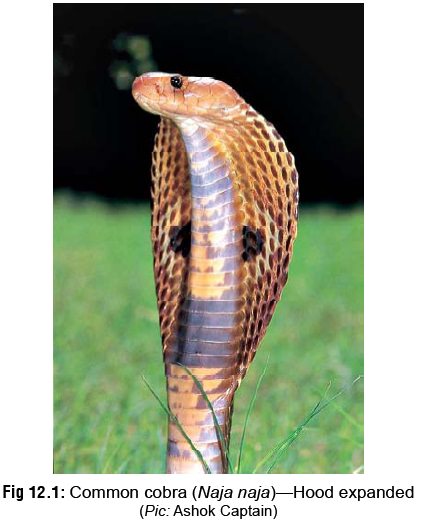
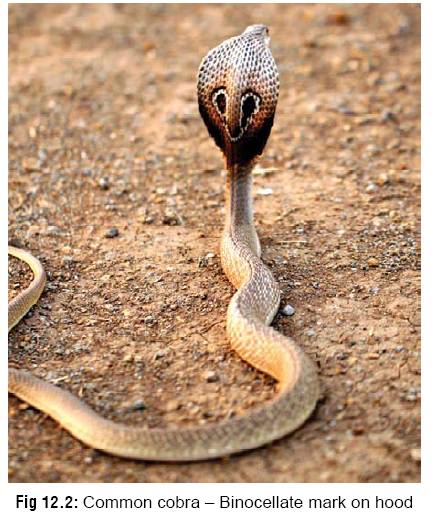
o
The former is more common in the
Bengal cobra (Najakaouthia). The
monocellate cobra is generally brownor black, with speckled or variegated,
white or pale yellow appearance (Fig
12.3). It often has alternate wide and narrow, transverse, dark bands.
Dorsal hood mark is a pale circle edged with black and has 1 to 3 spots;
ventral hood mark has a pair of dark spots, or a wide dark band.
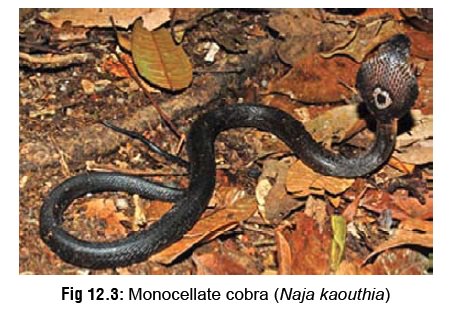
o
Another variety of cobra that is encountered
in the Indian sub-continent is the Andaman cobra (Najasagittifera).
·
The hood markings distinguish the
cobra from other species, and its habit of rearing up when alarmed make it
distinctive but not definitive, as other species do this, notably the Trinket
Snake.
On the ventral surface of the hood are faint, broad, black
stripes above which are two dark spots that extend over 3 to
4 scales.
·
The head is small, and pupils are
round.
·
The most important distinguishing
feature of this snake is the fact that the 3rd supralabial shield touches the
eye and nose shield. Also, a small wedge-shaped scale (“cuneate”) is present between
the 4th and 5th infralabials. Another important feature is said to be the
presence of 3 small scales just behind each eye.
Habitat
·
Grassy plains, fields, and
mountainous regions (up to 15000 feet). They usually reside among piles of
bricks, termite mounds, tangles of roots at the base of trees, and old masonry
constructions.
·
The spectacled cobra is encountered
virtually over the whole of mainland India except the north-east.
·
The black cobra (Naja oxiana) (Fig 12.4) occurs in the extreme north of India around Jammu and
Kashmir, and also in Gujarat and Rajasthan, although these may be patternless
versions of the spectacled cobra.
·
The cobra is diurnal, but bites from
cobras occur during both the day and the night. The cobra’s principal diet is
rats. It is known to enter human habitations in search of prey.
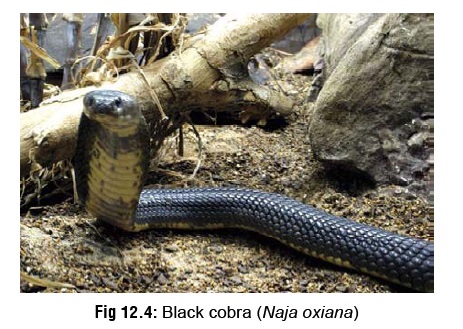
Nature of Venom
Predominantly
neurotoxic.
Related Topics